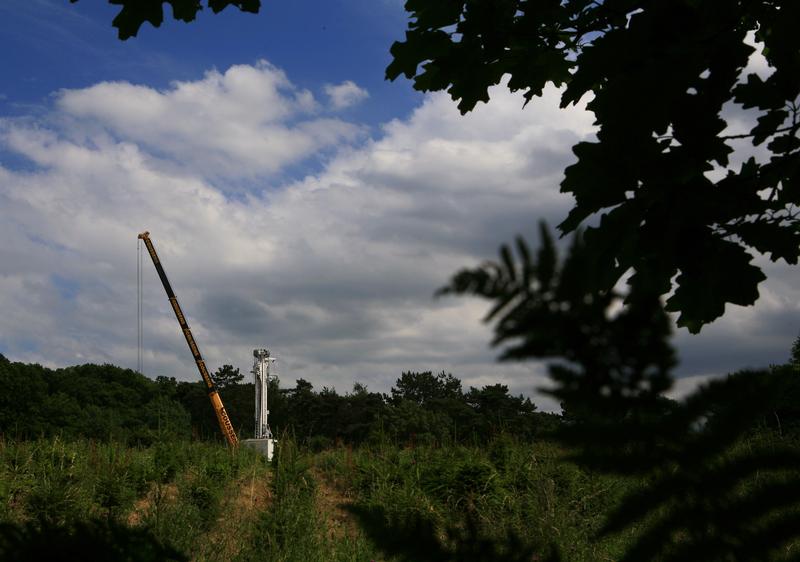Government attempts to dilute Labour’s proposed fracking regulations on environmental protection

Ministers are attempting to water down a proposed amendment to the Infrastructure Bill that would have banned fracking in water source protection zones and other protected areas and imposed stringent regulations on drilling.
The amendment proposed by Labour in the House of Commons, which would restrict fracking in the almost all of the UK’s fracking blocks and effectively ban it in 40% of land in England, was apparently agreed to by ministers in an effort to avoid a parliamentary rebellion.
However, the Government’s counter-proposal, tabled by Liberal Democrat transport minister Baroness Kramer, dilutes the language around safeguarding groundwater supplies from fracking.
It also makes it possible for the relevant Secretary of State to define what ‘protected areas’ are. Labour puts forward that these should include national parks, Areas of Outstanding Natural Beauty (AONBs), Sites of Special Scientific Interest (SSSIs) and groundwater protection zones.
The Labour amendment, which passed through the House of Commons last week, described ‘groundwater source protection zones’ – which is a defined term – whereas Kramer’s amendment used ‘groundwater source areas’ – which has yet to be defined.
Labour says its definition includes all three levels of “groundwater protection zones” identified by the Environment Agency – these are numbered 1-3, which at the furthest reach include groundwater catchment areas.
By removing the technical term ‘groundwater protection zone’, the secretary of state is given greater discretion about what falls within their definition of an ‘area’. Speaking to the Telegraph previously, government sources indicated that their idea of groundwater protection areas “would only apply to the narrowest definition”.
Large numbers of Labour and Tory seats that are covered in fracking exploration blocks are also covered in groundwater protection zones, including swathes of the Tory heartlands – but if the narrowest definition is used (zone 1, in all likelihood) that would significantly reduce the restrictions on fracking.
The Government amendment, if adopted, could also see shale gas drilling happening alongside protected areas and under them – as it changes ‘within and under’ in the Labour proposal to just ‘within’.
‘Fugitive emissions’ and other changes
Apart from the definition of groundwater, the two amendments differ on issue of fugitive emissions – the Labour amendment says the monitoring of ‘existing and future fugitive emissions’ must be carried out. But the new proposal narrows this down to methane emissions and removes the need to monitor future emissions.
Although methane emissions are chiefly what is thought of as fugitive emissions from fracking, there could be other kinds of emissions that are not specifically greenhouse gases but are environmentally damaging for other reasons, including air pollution – such as hydrogen sulphide, benzene, toluene, and xylene, according to Cornell University research.
Another significant change is that the Labour amendment requires mandatory environmental impact assessments (EIAs) to take place (along with the other safeguards) before fracking can take place. But the government amendment says EIAs only have to be “taken into account” by the local planning authority, which is significantly weaker phrasing allowing for more government discretion.
There are several other discrepancies between the two amendments that primarily serve to increase government’s scope to maneuvre on fracking and reduce the fracking paper trail:
- In the government proposition, the Secretary of State is given power to make amendments to conditions laid out in column 2 of the clause, which could potentially remove need for notices or permits
- the Government is more vague in its wording around community benefit schemes than Labour, which insists these must come from companies – potentially opening the door for government subsidy of these schemes
- Labour requires that residents are notified on an individual basis – government amendments don’t
- Labour implies that a land restoration requirement is imposed by local planning authority, while the government amendment is slightly more vague by stating clearly that the local planning authority has discretion to impose a land restoration requirement
What will happen next?
The Infrastructure Bill has been returned to the Lords (the legislation started in the Lords) because the House of Commons amendments were major and are being considered further.
There will be a debate on Monday afternoon in the Lords, either the government amendments will be accepted or there will be a vote on the amendments.
When the amendments pass, the bill will return to the Commons for a further vote, before the legislation gets the royal stamp of approval.
But if the government’s amendment is passed into law then Labour may well call for a moratorium on fracking – Labour shadow energy minister Tom Greatrix has said the government must implement all 13 of its safeguarding conditions for fracking – “not partially, not with exceptions…but in full, completely and comprehensively”, and called the new clause “all or nothing.”
Former Conservative environment minister Caroline Spelman has already called for a ban on fracking – and in Scotland and Wales ministers have voted to freeze fracking until more is known about health and climate safety (though the power to do so has not yet been devolved to Wales).
Meanwhile, the allocation of the 14th licensing round is expected at some point this year.

